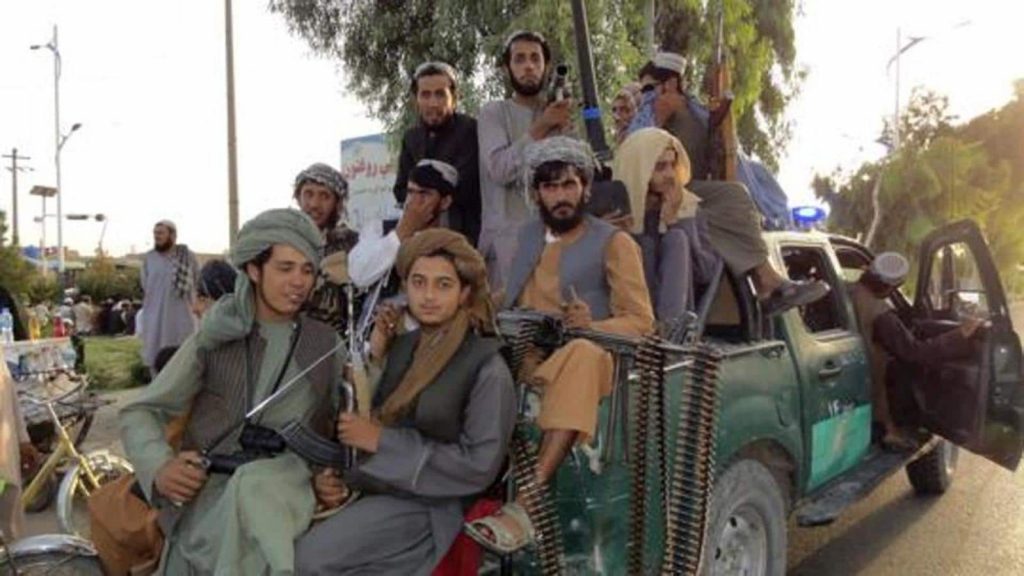NewsGate Press Network
Shakti Sinha
The suddenness with which the Taliban has seized control of Afghanistan seems to have caught most analysts off-guard.
Regrettably, most Indian writings are limited to how India has lost, and how it has allowed Pakistan an easy ride to victory. That all India did in Afghanistan over the last two decades is lost.
It is also argued that India should both have publicly called on the United States (US) not to withdraw and simultaneously built a coalition of the willing to frustrate a Taliban victory. Some have even argued that India should have done more militarily to help the Afghan National Army, with suggestions that, even at this stage, India should aim to stop the Taliban from seizing the reins of power.
We have let a sense of panic take over the public narrative.
National interests are secured over years and decades, but it is never one-way traffic and reverses should be expected. A reality check is the best way to understand what is happening that would allow us to craft the best way forward.
One, Afghanistan was never India’s to lose; the losers sadly are the Afghan people. If anything, India’s efforts should be centered on helping them escape the tyranny that is poised to take over their lives.
Afghans see India as their friend, and not without reason. India allows them access to education and health facilities, but this is not charity from our side; the Afghans pay for these at commercial rates.
India serves as a relevant political and development model, which they prefer to those offered by countries to their East and West. Strategically, good relations with India allow Afghan rulers much greater agency in dealing with Pakistan, on which they are dependent for reasons of geography and social relations. India was on the opposite side of the Mujahideen during the anti-Soviet jihad.
However, the Mujahideen were quick to reach out to India once they left eshawar and reached Kabul. History may not repeat itself in exactly the same way, but it does point to possibilities. But yes, our past efforts have not gone to waste.
Second, could India have persuaded the US to stay on? This is extremely unlikely, given Joe Biden’s long-held view that the US had no business doing nation-building or even getting involved in counter-insurgency. He had opposed Barack Obama’s surge and once Osama bin Laden was eliminated, his resolve strengthened.
Donald Trump held the same view and not for electoral reasons. The US army’s Afghan deployment has not featured in the top 20 political
issues in any survey over the past decade. What is less well known is that since 2016, the US army effectively stopped operating, except to give air support to Afghan forces.
Over this period, the US army suffered an average casualty of one per month. Could the US have maintained a low-cost, minimal presence in Afghanistan?
Yes perhaps — but could India have told the US to do so? That’s not how diplomacy works.
Three, should India not have built a coalition of wary neighbours to stall the Taliban? Unlike the post-1996 period, when the Taliban was opposed by the Northern Alliance, and India could work with Russia and Iran to support this armed group, the circumstances are completely different at present.
For geopolitical reasons that have nothing to do with India, these two countries have allied themselves with the Taliban to embarrass the US, and as part of an anti-Islamic State (IS) alliance.
Russia did the political heavy-lifting to legitimise the Taliban by organising peace conferences where representatives of the Afghan leaders sat with the Taliban, often with international participation. Representatives of the government could only attend in their private capacities. The Taliban terminology of referring to the government as “Kabul/ puppet regime” was legitimised.
Four, should India not have militarily strengthened the Afghan army? This ignores both geostrategy and geography. For much of the war, the US had made it clear that India’s footprint in Afghanistan should be civilian only, so as not to annoy the Pakistani army.
Indian support to the Afghan army was limited to training and supply of light weaponry. Later, four helicopters were supplied, but from Ukraine and not from India.
The fear that any supply would land up in the hands of the Taliban has been borne out. Media reports suggest that the Taliban has seized control of hundreds of Humvees and heavy weaponry from the government forces, including one helicopter given by India. In terms of the ground situation, it is clear that most Taliban gains have come from local deals and not through fighting.
The elected provincial council members and the government machinery handed over cities the Taliban, with the army melting away without a fight.
There is no appetite anywhere for any coalition to stop the Taliban from taking over. The only point of dispute is whether the Taliban would settle to stay in the background and allow a more acceptable administration to nominally take over as an interim measure. Or would they defy their Pakistani army mentors and assert direct control?
In these confusing times, it is best to calmly view the situation, show flexibility to adapt to the fast-changing situation and not let panic numb Indian decision-making. Courtesy Hindustan Times
Shakti Sinha is honorary director, Atal Bihari Vajpayee Institute of Policy Research and International Studies, MS University, Vadodara. He served as Vajpayee’s private secretary in the Prime Minister’s Office, and worked with the United Nations in Afghanistan for three years


Comments are closed for this post.